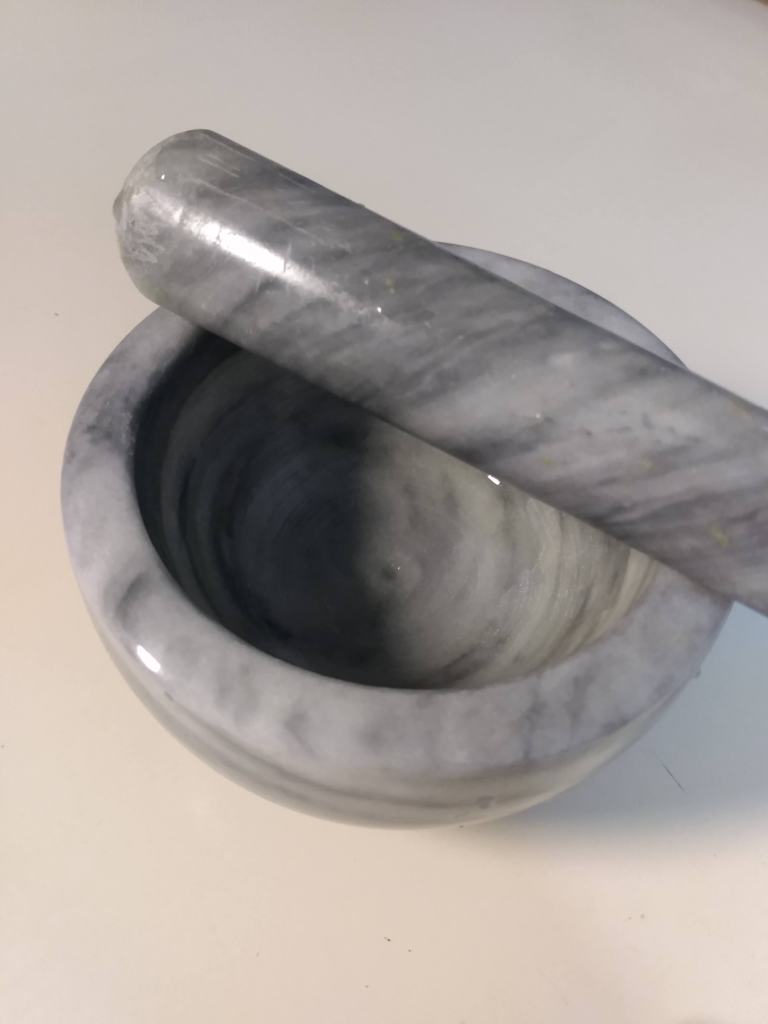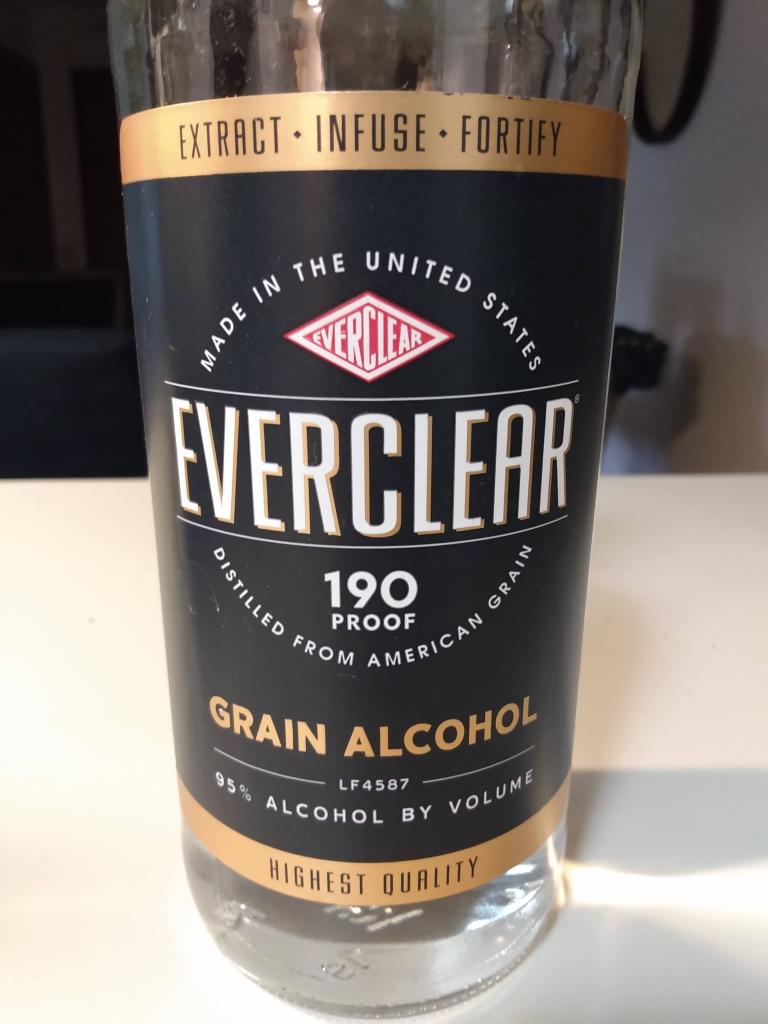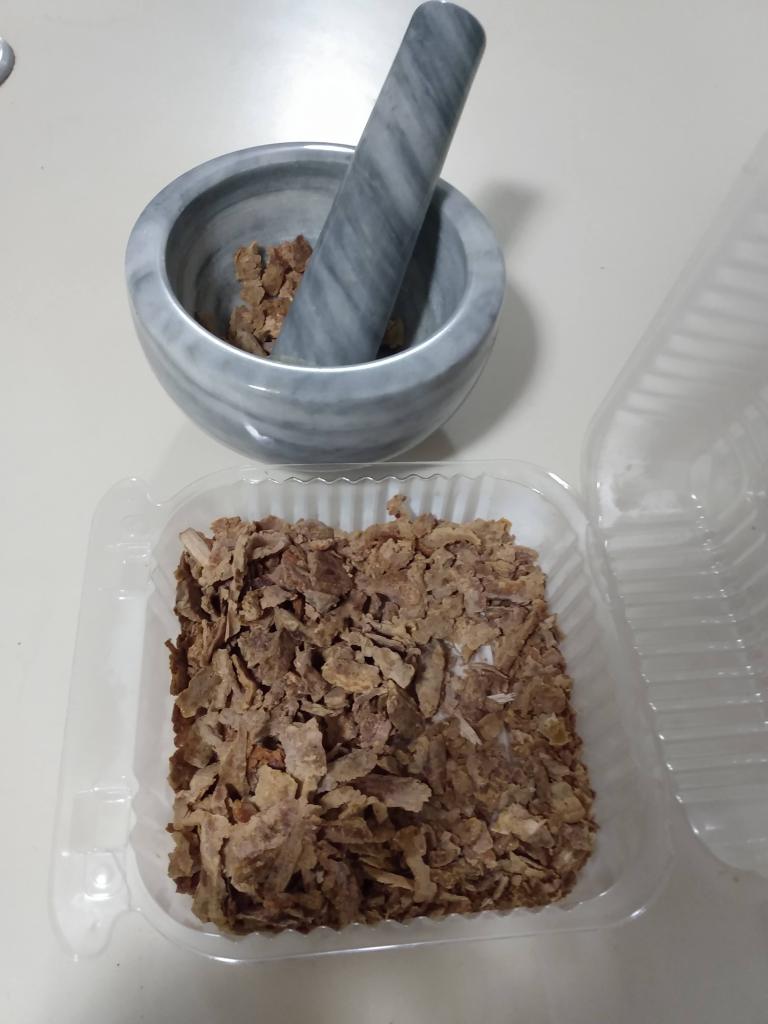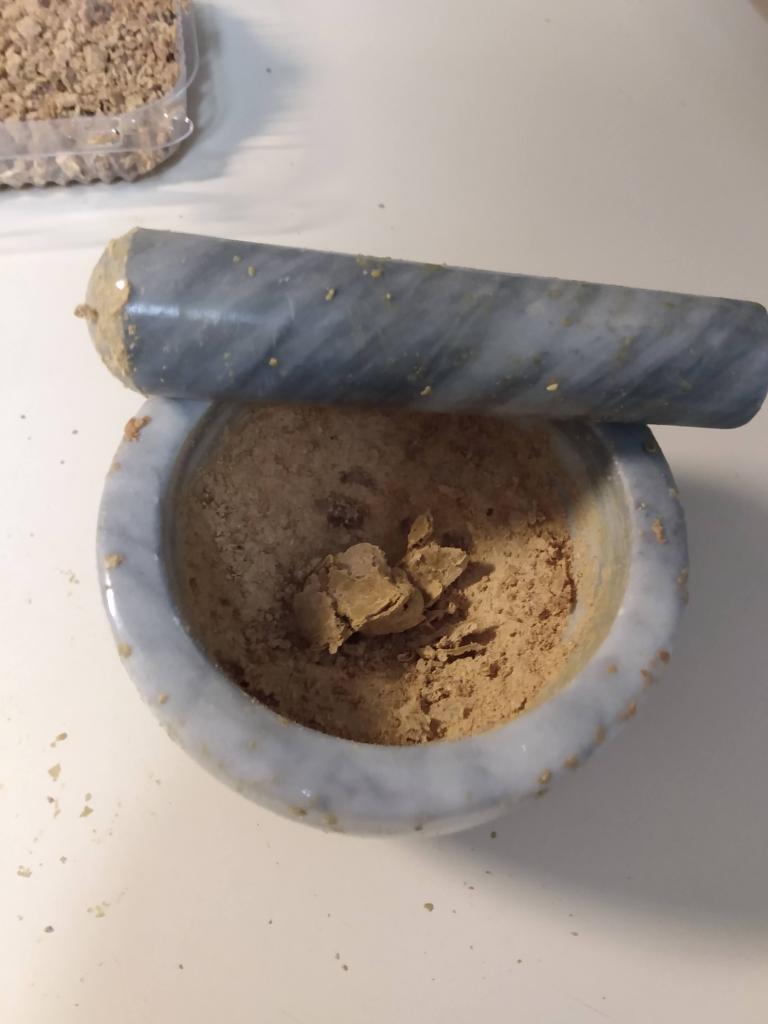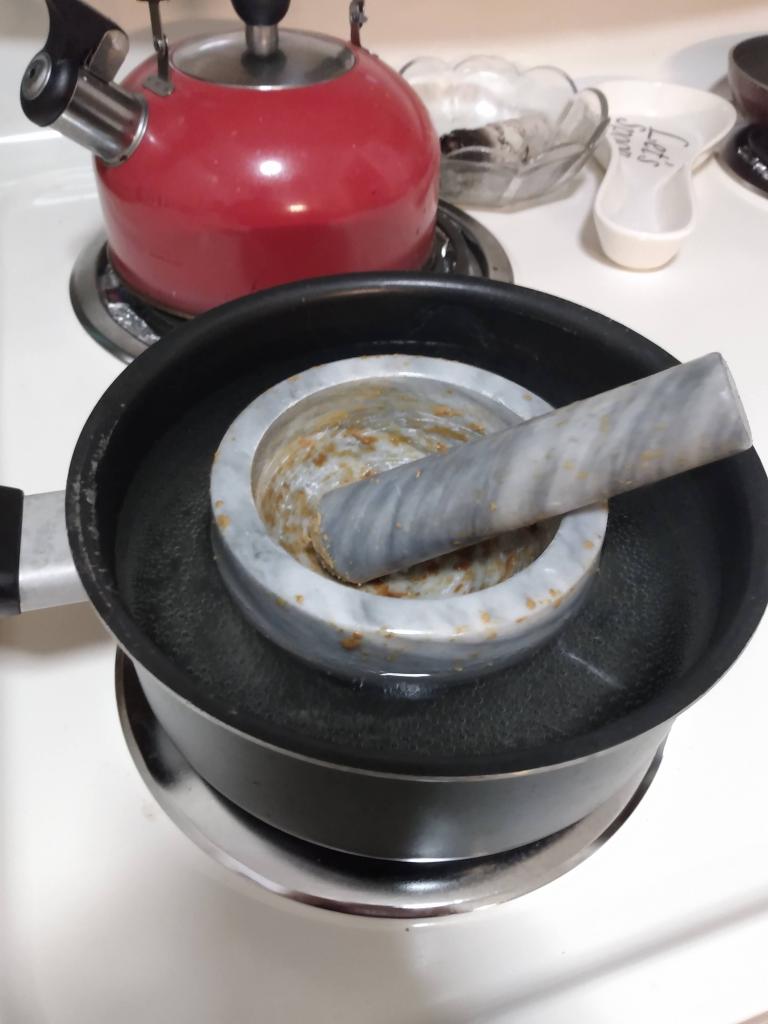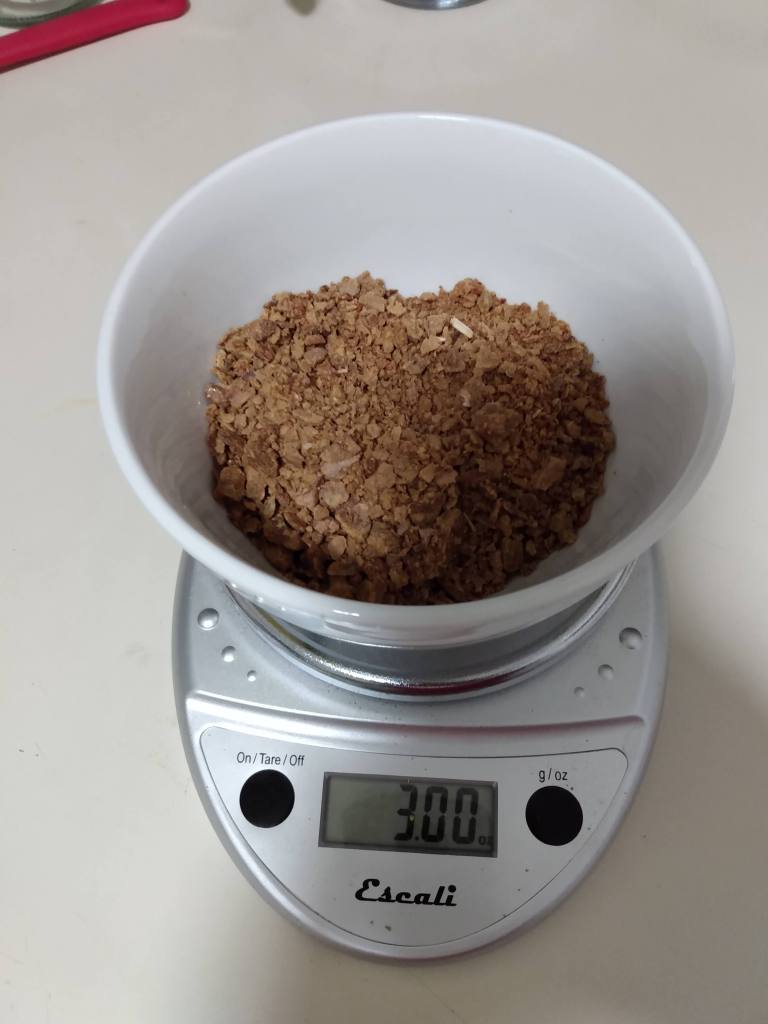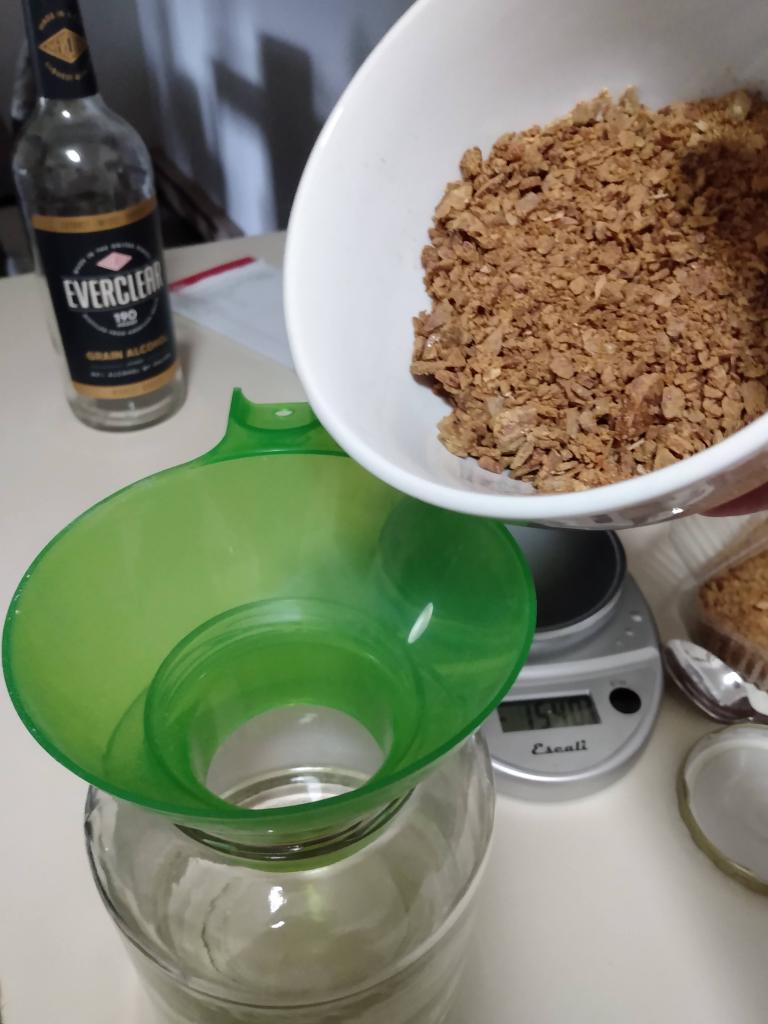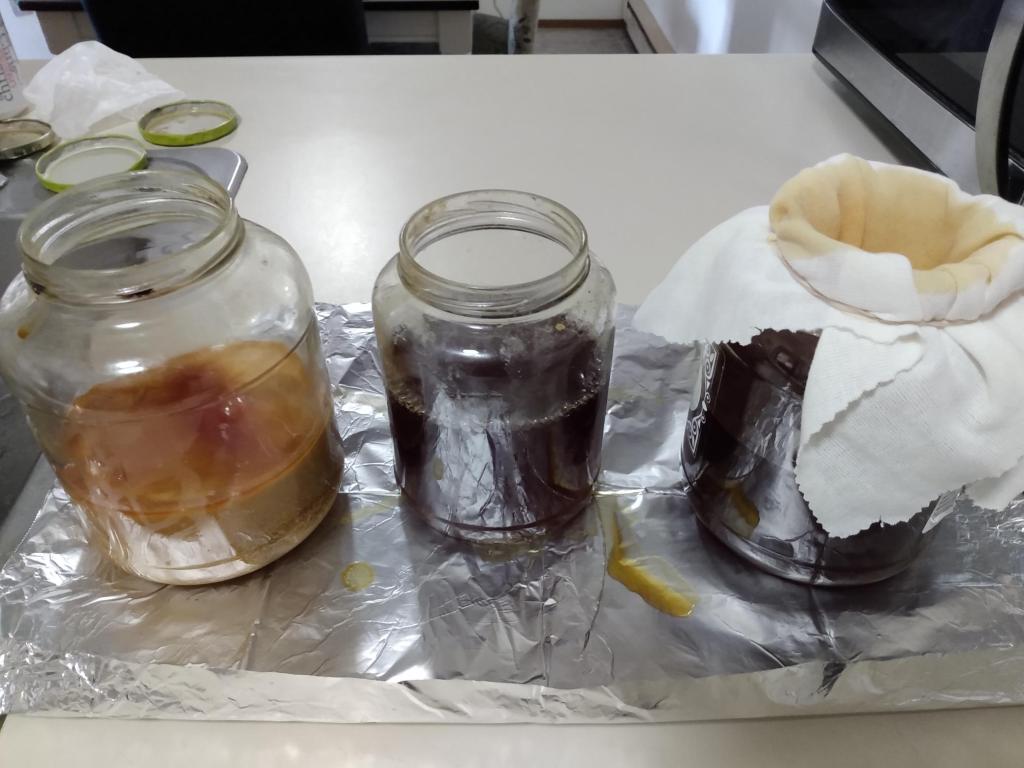I make my Propolis at a strength of 1:3. One part Propolis and three parts Everclear or other grain alcohol. The higher percentage of alcohol is necessary for extraction due to the resins, wax and other components that are found in Propolis. It should go without saying but I’ll say it anyway, make sure that all of your tools, bottles and other supplies are clean and have a clean, open space to work before starting. It’s also a good idea to have tools specific to propolis because getting them truly clean is very difficult.
Propolis can be particularly difficult to work with due to the resin and wax components. Working with dried herbs is easy. Working with tree resin, beeswax and bits of wood, not so much. I freeze my Propolis for at least three days before starting the tincture. This makes it brittle and easier to grind. I use a mortar and pestle to grind it and only put in about a tablespoon at a time. Work quickly and grind the propolis as small as possible. The smaller the pieces are, the more surface area is exposed to the alcohol and makes the extraction quicker and more thorough.
Periodically I’ll scrape out what gets pressed to the mortar and put it in ziplock bag. When I’m finished grinding, I put it back in the freezer for a day or more. When I take it out, I wrap the bag in a cloth and break it up using a hammer and add it to the tincture. You could possibly use the hammer for all the Propolis but I like using the mortar and pestle because I feel that it feeds some of my energy and intention into the tincture.
I use ounces for measuring. Liquid ounces are nearly equal to that of solid ounces. I use a glass jar with a screw on lid for the tincture. I measure and add the components and put the lid on tightly. Again, my preference is one part (ounce) of Propolis to three parts (ounces) of Everclear. Whatever unit of measure you use, just be consistent with it.
Labeling is very important. I include the name of the tincture, strength and the beginning and end date of the extraction. Store it in a dark place away from sunlight. The Propolis will settle to the bottom of the jar so each morning I give it a good swirl to expose all parts of the Propolis to the alcohol.
I let the tincture sit for eight weeks. There doesn’t appear to be a magic number for this. I’ve seen two weeks to eight weeks. I prefer to let it sit longer to ensure that I’ve got the most out of the Propolis as possible. After the eight weeks, it’s time to strain the solids from the liquid. There is just no way I’ve found to do this without the mess. I cover the counter with foil and fold up the edges to create a contained work area for drips or spills and it makes clean up easier. I wear gloves (usually nitrile) and strain the tincture through cheesecloth or a cotton fabric and squeeze every drop out of it I can get! The resulting liquid will have a stickiness to it so be as neat as possible so as not to waste any and minimize clean up. I use a rubber band to secure the cloth to the jar, creating a depression in the cloth so that the liquid filters into the jar. Slowly pour as much of the top, clear liquid through the cloth as possible. Let the jar sit and the sediment settle and pour off the clear liquid again. Do this until you’re left with the sediment. Pour this in small amounts into the cloth. Carefully slip the rubber band off the jar, holding the cloth in place, then gather the cloth, twist and squeeze to remove as much liquid as possible. Repeat until all the sediment has been filtered.
When I bottle the Propolis, I’ll add a label, again, with the name and strength on and the date that it was bottled. Before capping the bottle, use a clean cloth and non-acetone nail polish remover to wipe the edge of the bottle to remove any stickiness that could make removing the cap in the future more difficult. Wipe with a cloth dampened with water to remove the nail polish remover. The body of the bottle can also be cleaned this way.
With high percentage of alcohol, the shelf life is several years. I can’t seem to find consistency in just how long but I’ve seen anywhere from three to five to as long as ten years. The alcohol acts as a preservative so it shouldn’t go bad but as it ages it would degrade and lessen in potency. When in doubt, if it smells off, do not use it.
Clean up – I put the mortar and pestle into a pan with water and heat it on low. As the mortar and pestle warm, the remaining Propolis melts and can be easily removed. I don’t waste a bit of it and pour it into my tincture. Heating the mortar and pestle and any other tools you’ve used makes clean up a lot easier. It will likely take a little extra cleaning beyond that to remove the last of the residue. The nail polish remover can be used on counter tops (double check the label first!) and then immediately wiped again with a damp cloth.
